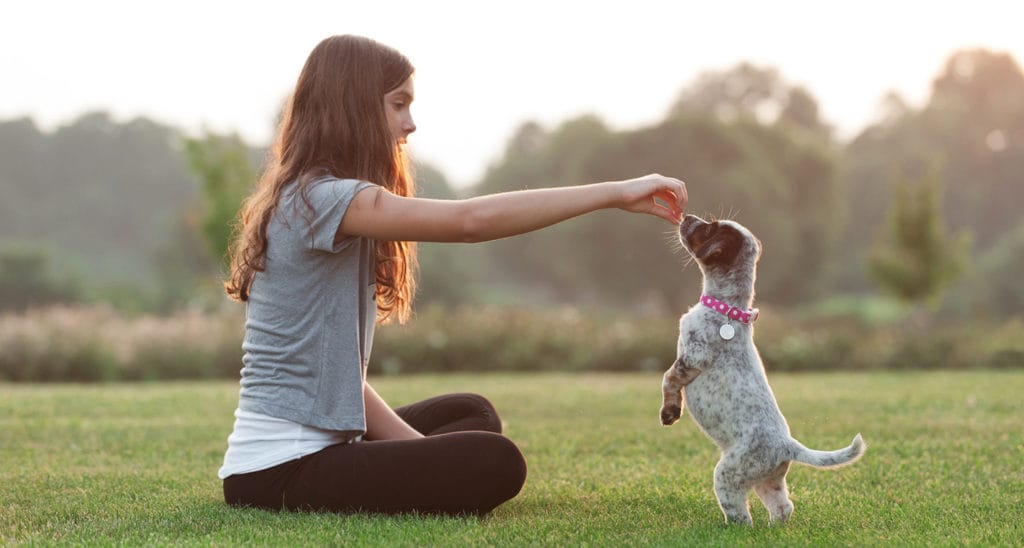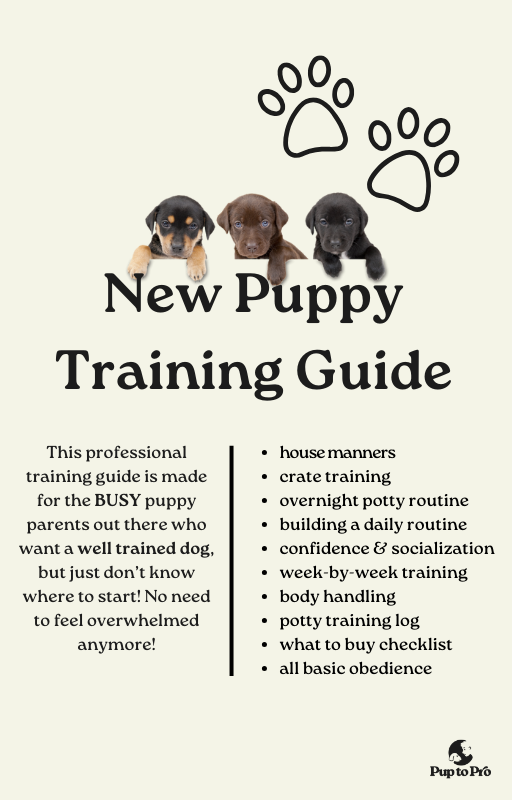Puppy Training Techniques: Teaching Basic Commands for a Happy Pet
Puppy Training Techniques: Teaching Basic Commands for a Happy Pet
Blog Article
Leading Pup Training Strategies to Guarantee a Well-Behaved Pet
Reliable pup training is critical for growing a well-behaved buddy, and different methods can significantly influence a pet dog's advancement. Among these, positive support sticks out as a foundational strategy, promoting count on and motivating desirable habits. Consistency in commands and very early socialization are similarly essential, laying the foundation for a well-adjusted pet. Additionally, the duties of cage training and chain decorum can not be ignored. As we discover these methods even more, it ends up being clear that the success of pup training hinges on a combination of approaches that can transform your pet dog's behavior in amazing methods.
Favorable Reinforcement Methods
Making use of favorable support techniques is crucial for effective young puppy training, as it urges wanted behaviors with rewards as opposed to punishment. This technique profits from the natural understanding processes of canines, enhancing etiquette by offering tangible and immediate benefits, such as treats, appreciation, or play. By linking positive end results with specific actions, young puppies are most likely to repeat those habits in the future.
Reliable favorable reinforcement involves timing and uniformity. Incentives should be offered quickly after the desired actions strikes develop a clear connection in the young puppy's mind. Furthermore, varying the kinds of incentives can maintain a young puppy's rate of interest and inspiration throughout the training procedure. For instance, some pups might respond far better to verbal appreciation while others may favor a preferred toy or treat.

Uniformity in Training Commands
Preserving uniformity in training commands is essential for reinforcing the lessons learned with favorable support strategies. Dogs flourish on routine and predictability, so using the same verbal commands and hand signals for details actions is necessary. This harmony assists puppies recognize what is expected of them, decreasing complication and frustration for both the instructor and the animal.

Timing likewise plays a considerable role in uniformity. Commands must be delivered promptly throughout training sessions and followed right away by positive support, such as treats or appreciation. This instant response aids solidify the association in between the command and the desired actions.
Integrating uniformity into training sessions will certainly produce a stable understanding atmosphere, promoting quicker proficiency of commands. Ultimately, a well-structured strategy promotes a strong bond between the young puppy and its owner, leading to a much more obedient and mannerly pet.
Socializing With Other Pet Dogs
Socialization with various other animals is crucial for a young puppy's development, as it assists them find out suitable actions and communication skills in varied social contexts. Very early interactions with various pets can considerably influence a pup's temperament and adaptability in numerous situations. When pups are exposed to a selection of pet dogs, they come to be a lot more certain and much less scared, which can prevent potential behavior concerns later in life.

In addition, observing body movement during interactions is important. Instruct your young puppy to recognize signals from other pets, such as signs of playfulness or discomfort, fostering mutual regard and understanding. Normal socializing not just improves your young puppy's social skills but additionally adds to their general well-being, developing a much more unified living atmosphere. Finally, prioritizing communications with various other pet dogs will certainly generate a well-shaped and socially experienced canine.
Crate Training Conveniences
Acknowledging the countless advantages of pet crate training can considerably boost both the pup's and owner's experience. Crate training supplies a secure and protected setting for puppies, guaranteeing they feel secured when laid off. This company website complacency can substantially lower anxiety and stress and anxiety levels for both the proprietor and the family her explanation pet.
Additionally, dog crates function as an important house-training tool. Pups naturally prevent soiling their resting location, consequently encouraging them to hold their bladder up until they are allow outdoors. This instinct can speed up the house-breaking procedure, cultivating good practices early.
When without supervision,Crate training likewise aids in handling a young puppy's behavior - puppy training. By providing a designated space, owners can prevent destructive behaviors, such as eating on furnishings or entering unsafe materials. Crates can be beneficial throughout traveling, using a familiar space that can help relax a pup in brand-new settings.
Finally, establishing a cage regular urges freedom, permitting pups to discover exactly how to be alone without anxiety. Overall, cage training is an effective method for promoting harmony, safety, and technique, bring about a well-adjusted, well-behaved pet dog.
Leash Training Basics
Leash training is an essential facet of accountable pet dog ownership that ensures a risk-free and enjoyable strolling experience for both the pup and its owner. Appropriate chain training begins early, preferably during the young puppy's socialization period. This training helps establish good routines and advertises favorable actions when out in public.
To begin, pick a comfy collar or harness that fits your pup well. Attach a tough chain, guaranteeing it is not as well long, as this can cause drawing and unpredictable habits. Beginning in a quiet environment to lessen distractions and slowly present your puppy to new surroundings.
Use favorable reinforcement techniques, such as treats and praise, to motivate your young puppy to stroll close to you. Quit strolling and wait for them to return to your side prior to proceeding if your pup draws. This shows them that drawing will certainly not generate onward activity. Uniformity is key; practice consistently and continue to be patient, see this page as proficiency takes time.
Additionally, integrate brief training sessions with enjoyable disturbances to construct your pup's emphasis. With devotion and perseverance, chain training will result in a hospitable buddy, making strolls satisfying for both the proprietor and the pup.
Verdict
In verdict, utilizing reliable young puppy training techniques is essential for developing a mannerly animal. Favorable reinforcement fosters trust fund and motivates desired actions, while uniformity in commands aids in understanding. Socialization with other pets improves adaptability and social abilities, and dog crate training provides a safe and secure atmosphere that supports house-training initiatives. Chain training establishes correct walking practices, adding to pleasurable outings. On the whole, these methods collectively promote a harmonious relationship between puppies and their proprietors.
As we discover these methods even more, it becomes clear that the success of puppy training pivots on a combination of methods that can change your animal's habits in impressive methods.
Making use of positive reinforcement methods is crucial for effective puppy training, as it motivates preferred actions through rewards rather than punishment.Crate training likewise assists in taking care of a puppy's behavior when not being watched.Leash training is a basic aspect of responsible animal possession that makes certain a safe and satisfying walking experience for both the puppy and its proprietor.In final thought, employing efficient pup training methods is crucial for establishing a well-behaved family pet.
Report this page